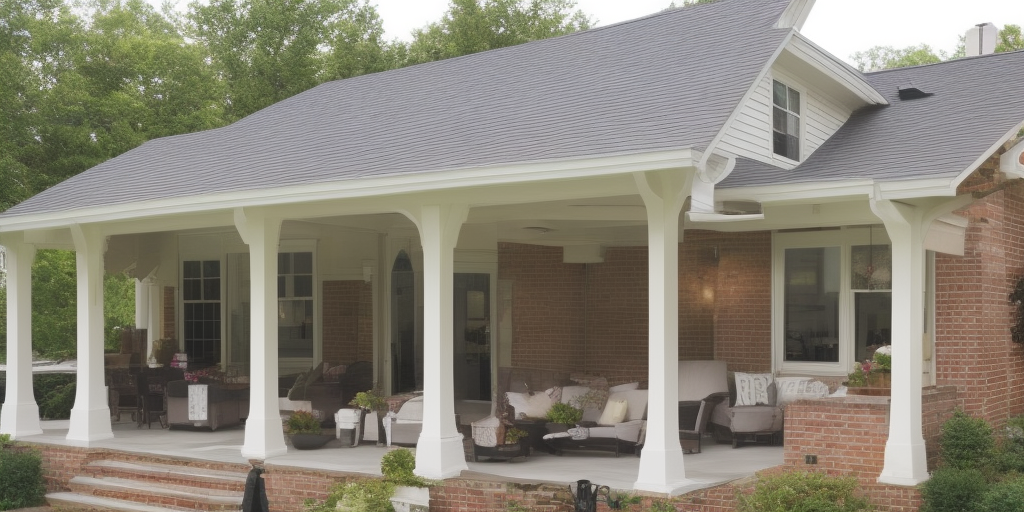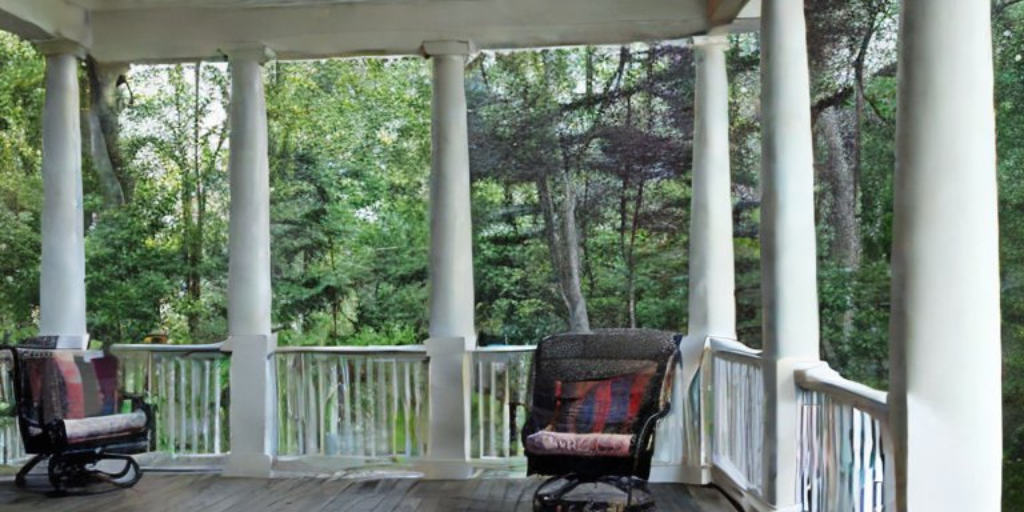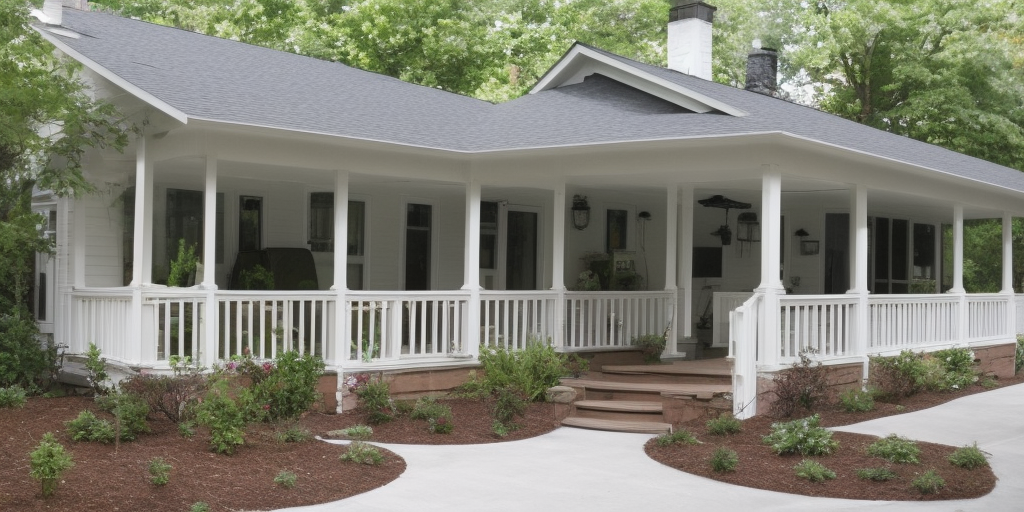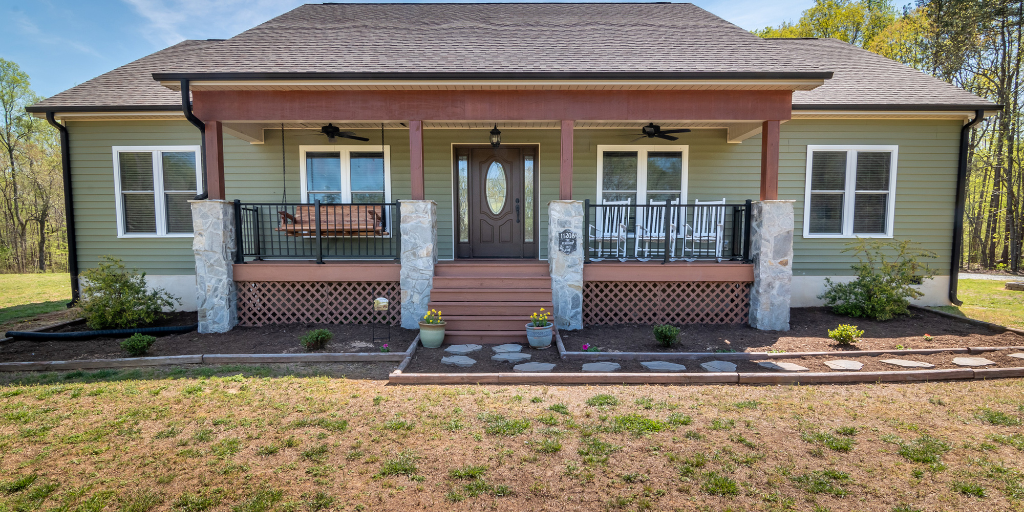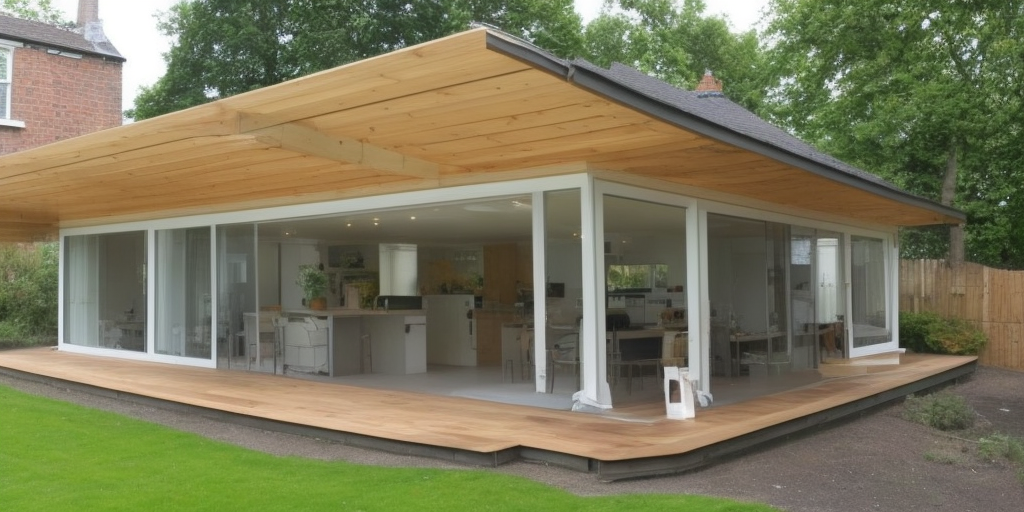How much should a new porch cost is a question that many homeowners ask when considering adding a porch to their home. A porch can not only increase the value of a home, but it can also provide a comfortable and welcoming outdoor space for family and friends to gather.
However, the cost of a new porch can vary greatly depending on a number of factors. We will discuss the different factors that can affect the cost of a new porch and provide some guidance on how to determine a reasonable budget.


What is the average cost of a new porch installation?
Contents
- 1 What is the average cost of a new porch installation?
- 2 What factors affect the cost of a new porch installation?
- 3 How can I get an accurate estimate for a new porch?
- 4 How much does it cost to build a small porch?
- 5 What are the most affordable materials for a new porch?
- 6 What are the most expensive materials for a new porch?
- 7 How much does a screened-in porch cost compared to an open porch?
- 8 Is it more cost-effective to DIY a porch installation or hire a professional?
- 9 How much does a porch renovation cost compared to a new porch installation?
- 10 How much should I budget for a high-end porch design?
- 11 Are there any hidden costs associated with a new porch installation?
- 12 Can I negotiate the cost of a new porch installation with contractors?
- 13 How long does a new porch installation take, and does it affect the cost?
- 14 What permits and inspections are required for a new porch installation, and do they affect the cost?
- 15 How much does a custom-designed porch cost compared to a pre-designed one?
- 16 Aluminum porches
- 17 Composite decking
- 18 Composite flooring
- 19 Wooden porches
- 20 Screened-in porches
- 21 Outdoor kitchens
- 22 Our conclusion on how much should a new porch cost
The average cost of a new porch installation can vary depending on several factors, including the size and complexity of the design, the materials used, and the region where the porch will be built.
According to HomeAdvisor, the national average cost for a new porch installation ranges from $8,000 to $25,000. However, some homeowners may pay as little as $2,000 for a basic porch, while others may spend upwards of $50,000 for a larger, more elaborate porch design.
The cost of a new porch installation also depends on the type of materials used. For example, a basic wooden porch may cost less than a porch made of composite materials, such as PVC or vinyl.
Additionally, the cost of labor may vary depending on the contractor’s experience and the complexity of the design. To get an accurate estimate for a new porch installation, it’s important to obtain multiple quotes from reputable contractors and factor in all the costs, including permits and inspections.
What factors affect the cost of a new porch installation?
Several factors can affect the cost of a new porch installation. The size and complexity of the design are two significant factors that impact the cost. A larger porch or one with more complex features, such as multiple levels or intricate railings, will generally cost more than a basic design.
The materials used for the porch also affect the cost, as some materials are more expensive than others. For example, a porch made of high-end materials, such as stone or composite materials, will cost more than a porch made of wood.
Labor costs are another factor that can affect the cost of a new porch installation. Highly skilled contractors or specialized workers may cost more than general contractors, and a porch design that requires a lot of labor or unique skills will generally be more expensive.
Additionally, permits and inspections can add to the cost of a new porch installation. Some cities or municipalities require permits for porch installations, and inspections may be necessary to ensure that the porch meets local building codes. It’s important to factor in all of these costs when considering the overall cost of a new porch installation.
How can I get an accurate estimate for a new porch?
To get an accurate estimate for a new porch installation, it’s important to obtain multiple quotes from reputable contractors. It’s recommended that homeowners get at least three quotes from different contractors to compare prices and services.
When obtaining quotes, be sure to provide each contractor with the same information regarding the size, materials, and design of the porch to ensure that the estimates are comparable. Additionally, homeowners should ask for references from previous clients and verify the contractor’s license and insurance status before hiring them.
Homeowners should also factor in all the costs associated with a new porch installation, including permits and inspections. Some cities or municipalities require permits for porch installations, and inspections may be necessary to ensure that the porch meets local building codes.
Homeowners should check with their local government offices to determine the specific requirements for their area and factor in these costs when budgeting for the project. By doing thorough research and obtaining multiple quotes, homeowners can get an accurate estimate for a new porch installation and ensure that they are getting a fair price for the project.
How much does it cost to build a small porch?
The cost to build a small porch can vary depending on several factors, such as the materials used, the size of the porch, and the complexity of the design. A small porch typically measures between 80 and 100 square feet and may cost between $2,000 and $6,000 to build, depending on the materials used and the region where the porch will be built.
The type of materials used for a small porch can significantly impact the cost. For example, a small porch made of pressure-treated wood may cost less than a porch made of composite materials, such as PVC or vinyl. Additionally, the cost of labor may vary depending on the contractor’s experience and the complexity of the design.
To get an accurate estimate for a small porch installation, it’s important to obtain quotes from reputable contractors and factor in all the costs, including permits and inspections. By doing so, homeowners can budget for a small porch installation and enjoy the benefits of having a cozy outdoor space to relax and entertain.


What are the most affordable materials for a new porch?
When it comes to building a new porch, some materials are more affordable than others. One of the most affordable materials for a new porch is pressure-treated wood, which is a type of lumber that has been chemically treated to resist rot and insects.
Pressure-treated wood is a popular choice for porch flooring and can cost as little as $1 to $3 per square foot. Another affordable material for a new porch is concrete, which is durable and long-lasting. A concrete porch can be stamped or stained to resemble other materials, such as stone or brick, and can cost between $6 and $10 per square foot.
Composite materials, such as PVC and vinyl, are also affordable options for a new porch. While these materials may be more expensive than wood or concrete, they require little maintenance and can last for many years.
PVC and vinyl porches can cost between $10 and $30 per square foot, depending on the quality of the material and the complexity of the design. Homeowners should research different materials and obtain quotes from reputable contractors to determine which option best fits their budget and needs.
What are the most expensive materials for a new porch?
If budget is not a concern, there are several high-end materials available for a new porch that can add elegance and sophistication to any home. One of the most expensive materials for a new porch is natural stone, such as granite or marble.
Natural stone is highly durable and can withstand harsh weather conditions. However, the cost of natural stone can range from $30 to $100 per square foot, making it one of the most expensive options for a porch.
Another high-end material for a new porch is composite decking, which is a combination of plastic and wood fibers. Composite decking is highly durable and requires minimal maintenance, making it a popular choice among homeowners who want a porch that will last for many years.
However, composite decking can cost between $30 and $60 per square foot, depending on the quality of the material and the complexity of the design. Other high-end materials for a new porch include metal, such as aluminum or wrought iron, and exotic woods, such as teak or ipe.
Homeowners should research different materials and obtain quotes from reputable contractors to determine which option best fits their budget and needs.
How much does a screened-in porch cost compared to an open porch?
The cost of a screened-in porch can be significantly higher than an open porch due to the added features and materials required. A screened-in porch provides protection from bugs and other pests while still allowing for fresh air and natural light.
The cost of a screened-in porch can vary depending on the size of the porch, the materials used, and the region where it will be built. According to well known ccontributor, the national average cost to build a screened-in porch is between $8,000 and $25,000, while an open porch typically costs between $2,000 and $10,000.
One of the main factors that contribute to the higher cost of a screened-in porch is the screening material itself. While traditional fiberglass screens may be less expensive, other options such as aluminum or pet-resistant screens can cost more. Additionally, the framing for a screened-in porch may require additional support to accommodate the weight of the screening material.
Despite the higher cost, a screened-in porch can provide an added layer of comfort and protection for homeowners who want to enjoy their outdoor space without the nuisance of bugs or other pests.
Is it more cost-effective to DIY a porch installation or hire a professional?
When it comes to porch installation, homeowners may wonder if it is more cost-effective to do it themselves or hire a professional. While a DIY approach may seem appealing due to the potential cost savings, it may not be the most cost-effective option in the long run.
Building a porch requires specialized knowledge and skills, as well as access to specialized tools and equipment. DIY projects may also take longer to complete, leading to additional costs associated with time and labor.
Hiring a professional contractor to install a porch can provide several benefits, including a faster and more efficient installation process, access to specialized tools and equipment, and a higher quality finished product.
A professional contractor can also provide guidance on the best materials and design options to fit the homeowner’s budget and needs. While the cost of hiring a professional may be higher upfront, it can provide a greater return on investment in terms of the quality and durability of the finished product, as well as potential cost savings associated with reduced maintenance and repair costs over time.
Ultimately, the decision of whether to DIY or hire a professional for a porch installation should be based on the homeowner’s level of skill and experience, as well as their budget and time constraints.


How much does a porch renovation cost compared to a new porch installation?
Renovating an existing porch can be a cost-effective way to update and improve an outdoor living space. The cost of a porch renovation can vary depending on the scope of the project, the materials used, and the region where the home is located.
According to HomeAdvisor, the national average cost to renovate a porch is between $2,500 and $9,500, while a new porch installation typically costs between $2,000 and $30,000. The cost of a porch renovation can be significantly lower than a new installation, especially if the existing porch structure is in good condition and only minor updates are needed.
One of the main factors that can affect the cost of a porch renovation is the extent of the updates required. For example, if the existing porch structure is in good condition but the flooring or screening needs to be replaced, the cost may be relatively low.
However, if major structural repairs or updates are required, such as reinforcing the foundation or adding additional square footage, the cost may be higher. Ultimately, the cost of a porch renovation versus a new installation will depend on several factors, including the homeowner’s budget, the desired updates, and the overall condition of the existing porch structure.
It is important for homeowners to obtain quotes from reputable contractors and compare the costs and benefits of each option before making a decision.
How much should I budget for a high-end porch design?
A high-end porch design can provide a luxurious and stylish outdoor living space, but it also comes with a higher price tag. The cost of a high-end porch design can vary widely depending on several factors, including the size of the porch, the materials used, and the level of customization desired.
According to HomeAdvisor, the national average cost for a high-end porch design is between $30,000 and $50,000 or more. However, depending on the scope of the project and the materials used, the cost can easily exceed this range.
Some of the features commonly found in a high-end porch design include high-quality materials such as natural stone or hardwoods, intricate and custom detailing, and built-in features such as fireplaces, seating areas, and outdoor kitchens.
The cost of these features can add up quickly, but they can also provide a significant return on investment in terms of increased home value and improved quality of life. To budget for a high-end porch design, homeowners should first determine their desired features and materials, obtain quotes from reputable contractors, and allocate a budget that takes into account any unexpected expenses that may arise during the construction process.
Ultimately, a high-end porch design can provide a luxurious and comfortable outdoor living space that is well worth the investment.
While the cost of a new porch installation can vary depending on several factors, including the materials used, the size of the porch, and the level of customization desired, there may be hidden costs associated with the project.
One of the most common hidden costs is related to permitting and zoning requirements. Depending on the location and size of the porch, homeowners may need to obtain permits and comply with zoning regulations, which can add to the overall cost of the project.
In addition, if the porch is attached to the home, additional structural work may be required to ensure that the porch is properly integrated with the existing structure, which can also increase the cost of the project.
Another potential hidden cost associated with a new porch installation is related to maintenance and upkeep. Depending on the materials used, the porch may require regular maintenance such as staining or sealing, which can add to the overall cost of ownership over time.
In addition, if the porch is not properly installed or sealed, it may be more prone to damage from weather or pests, which can also result in additional costs associated with repairs or replacements. To avoid hidden costs associated with a new porch installation, homeowners should work with a reputable contractor who can provide a detailed estimate that takes into account all of the factors that may impact the cost of the project.
It is also important to consider the long-term costs associated with maintenance and upkeep when selecting materials and designs for the porch.
Can I negotiate the cost of a new porch installation with contractors?
While it may be possible to negotiate the cost of a new porch installation with contractors, it is important to approach this process carefully and with realistic expectations. In general, contractors may be willing to negotiate on the price of the project if they are competing with other contractors for the job or if the project is particularly large or complex.
However, it is important to keep in mind that contractors must also consider their own costs, such as labor and materials, when determining their price. As a result, negotiating the price may not always be feasible or result in significant cost savings.
To negotiate the cost of a new porch installation, homeowners should be prepared to provide detailed information about the scope of the project, including the desired materials and design, as well as any competing quotes they may have received from other contractors.
It may also be helpful to research average costs for similar projects in the area to get a sense of what a reasonable price range may be. Ultimately, homeowners should approach negotiations with a respectful and professional attitude, and be prepared to consider other factors besides price when selecting a contractor, such as experience, reputation, and quality of work.


How long does a new porch installation take, and does it affect the cost?
The duration of a new porch installation can vary depending on several factors, including the size and complexity of the project, the materials used, and the availability of contractors and materials.
In general, a small to medium-sized porch installation can take anywhere from a few days to several weeks, while larger or more complex projects may take several months to complete. It is important for homeowners to discuss the timeline of the project with their contractor to ensure that their expectations are aligned and that they have a realistic timeline for completion.
The duration of a porch installation can impact the cost of the project, as contractors may need to adjust their pricing to account for the additional labor and time required for more complex or lengthy projects.
However, it is important for homeowners to balance cost considerations with the need for a high-quality installation that meets their needs and expectations. Rushing the project or cutting corners to save money can result in subpar workmanship that may require additional repairs or maintenance down the line, ultimately costing homeowners more in the long run.
As a result, it is important for homeowners to work with a reputable contractor who can provide a realistic timeline for the project and ensure that the installation is completed to the highest standards of quality and safety.
What permits and inspections are required for a new porch installation, and do they affect the cost?
In many cases, permits and inspections are required for a new porch installation to ensure that the project meets building codes and safety standards. The specific requirements for permits and inspections can vary depending on the location and scope of the project, but may include zoning permits, building permits, and electrical or plumbing inspections.
Homeowners should consult with their local building department or a licensed contractor to determine what permits and inspections are required for their project.
The cost of permits and inspections may be included in the overall cost of the porch installation or may be an additional expense for the homeowner. In general, permit fees are based on the cost of the project and can range from a few hundred dollars to several thousand dollars.
Inspections may also incur additional fees, as inspectors may charge an hourly rate or a flat fee per inspection. However, obtaining the necessary permits and inspections is essential for ensuring the safety and quality of the porch installation, and failing to do so can result in costly fines or legal issues.
Homeowners should factor the cost of permits and inspections into their budget for the project and work with their contractor to ensure that all requirements are met.
How much does a custom-designed porch cost compared to a pre-designed one?
The cost of a custom-designed porch can vary widely depending on the complexity and size of the design, as well as the materials used and the level of customization required. Custom-designed porches typically require more planning and collaboration between the homeowner and contractor, which can increase the cost of the project.
In addition, custom designs may require more specialized materials or construction techniques, which can further drive up the cost. However, the benefits of a custom design can be substantial, as it allows homeowners to create a porch that perfectly suits their needs and complements the style of their home.
In contrast, pre-designed porches are typically less expensive than custom designs, as they are designed to fit a standard set of specifications and do not require as much planning or collaboration.
Pre-designed porches may be available as prefabricated kits, which can be a cost-effective solution for homeowners who want a simple, functional porch design. However, pre-designed porches may not offer the same level of customization or aesthetic appeal as custom designs, and may not be the best choice for homeowners who want a unique, high-end porch.
Ultimately, the cost of a porch installation will depend on a range of factors, including the homeowner’s budget, preferences, and the specific requirements of their project.
Aluminum porches
Cost of aluminum porches is determined by a few factors. The porch size has a huge impact on pricing. If you are planning to use the porch as a dining area or a comfortable sitting area, a 16′ x 20′ porch will be the perfect size. However, if you are looking to create an outdoor room with seating and a table, a smaller porch might not be the best option.
The screen material used is another important consideration. If you want to add screens, you can either install them on a structure already on the property, or add them yourself. The latter will require a fourth wall of screening. The cost of aluminum porches depends on whether you choose fiberglass or aluminum screens. A fiberglass screen is the most affordable option, but it is not the best choice. You should also choose a screen material that will prevent dust, pollen, and bugs from penetrating the aluminum porch.
A 10-by-10 aluminum porch with three-inch-thick insulation would be the most expensive. The other costliest option is vinyl, but you can find some great deals on patio covers made of this material. Aluminum porches are easier to maintain and will not be harmed by a natural disaster. Vinyl porches, on the other hand, require supporting materials and are not as sturdy as aluminum ones. If you don’t mind doing the work yourself, you can buy an aluminum porch kit.
Composite decking
Composite decking has many advantages. The material is more durable, can withstand higher temperatures, and does not fade or crack like wood. However, composite decking does require maintenance. You should wash it regularly to keep it looking good. Composite materials can become moldy, so regular washing is recommended. For more information, visit the manufacturer’s website. You should also avoid touching composite decking with wet feet to avoid splinters.
Another benefit of composite decking is that it does not require frequent staining or painting. This is particularly important for screened-in porches. While natural wood requires periodic paint or staining, composite decking will not need regular maintenance. Composite decks can be stained or painted to add a nice finishing touch. It is also environmentally friendly, since some composite companies use recycled materials for their products. If you’re looking for the best decking material for your porch, composite is a good choice.
When choosing a material for a new porch, check out the warranty. Many brands are sold with a 10-year warranty, which is great news for people with allergies. While many manufacturers offer a 25-year warranty on their products, you may want to check them out to see which one will last the longest. You can find composite decking in many different colors and textures at your local home improvement store. You can even find a manufacturer near you who offers custom colors.
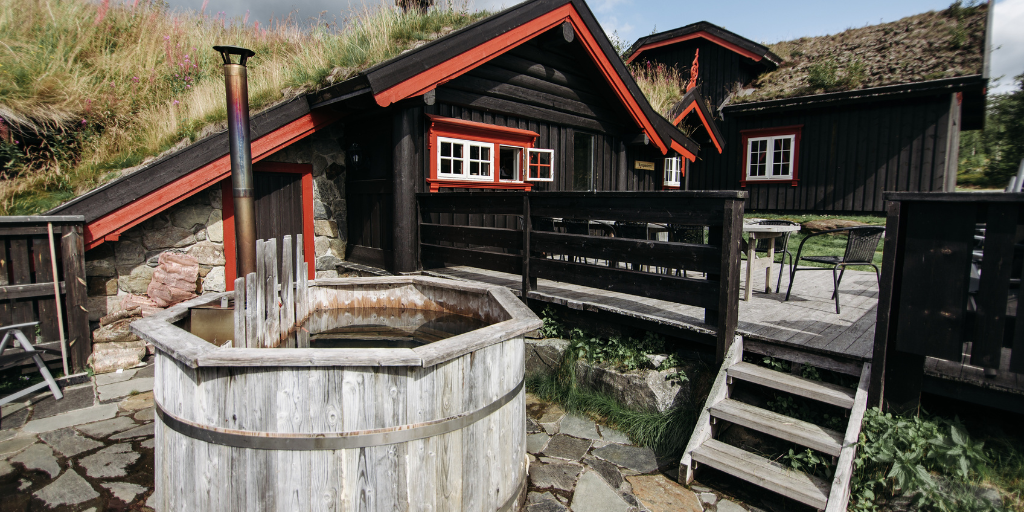

Composite flooring
Unlike wood, composite flooring is lightweight and incredibly durable. Many people opt for it as a new porch floor because it mimics the look of natural wood, but it also resists water and stains. Moreover, it won’t cause splinters and requires minimal maintenance. You can choose between two types of composite flooring: hollow or solid. Hollow ones are generally cheaper than solid, but they are less durable and may be slippery when wet.
Another popular choice is classic wood. This material is renewable and is easy to maintain, but it also turns gray with age and exposure to the elements. As a result, it requires annual maintenance. Wood floors can become damaged by the sun, rain and snow, so choose a material with a high-quality stain to protect them from these harmful effects. However, wood may not last long enough to withstand the elements if not treated properly.
Another option is pressure-treated pine, which is inexpensive but requires frequent maintenance. It will increase the value of your home by about 15 percent in the first year, depending on your climate. Choose grade one pressure-treated pine for floorboards and railings, which can last between 15 and 40 years. However, this type of wood will darken and crack with rain, and it may need to be re-treated every few years.
Wooden porches
The construction of a wooden porch depends on the materials used. Unlike composite wood decks, real wood is much more attractive. Although composite wood is cheaper, it does not retain the beauty of wood over time. A fully wooden porch can recover 85% of its cost when you sell your house. The cost of a fully wooden porch will run between $5 and $15 per square foot. In comparison, treated wood costs $8 to $20 per square foot.
A wooden porch with a skirt is inexpensive, but it requires more maintenance than a vinyl or metal one. If you do not want to paint the porch, vinyl or glass railings may be a better option. These options are durable and low-maintenance and can match the rest of your home’s design. Another low-maintenance option is brick or faux stone. However, they are more expensive and harder to remove.
Porch costs include labor, materials, and installation. You’ll pay an experienced contractor $20 to $40 per hour to build a porch. The cost of posts, on the other hand, can range from $20 to $120 per foot. The number of posts will depend on the type of material you choose, but it’s a good idea to seek advice from a professional before making a decision. And remember, your insurance may not cover expansion costs.
Screened-in porches
The cost of screened-in porches can vary significantly, depending on the materials you choose and how much space you have to work with. The more space you have to work with, the more expensive the project will be. The cost of the porch is also highly dependent on where you live. Local labor rates, the density of the population, and the distance to shipping centers will all impact the cost. Here are a few tips on how to minimize the costs of screened-in porches.
The cost of a screened-in porch will vary depending on where you live. If you already have a roof on your home, the project will likely be easy. But if you need a new roof and would like a solar-powered or motorized retractable screen, the project will likely be more costly. Materials and labor prices will also depend on whether you’d like to install a balcony.
Before starting a screened-in porch project, it is important to understand the costs associated with it. Building permits can cost anywhere from $447 to $2313 depending on the location and team. If you live in a remote area, you may need to apply for a permit from your local city, which can cost up to $7,500. Land surveying, meanwhile, can cost anywhere from $200 to $1,000, depending on the location.
Outdoor kitchens
When it comes to outdoor kitchens, many people hire an interior designer to make the design and pick out furniture. While it is possible to design your own outdoor kitchen, a designer can help you create an attractive aesthetic, which is an added cost. Make sure to factor this into your budget, too. After all, you don’t want to be paying for a new kitchen only to have it break down three months later.
The cost of an outdoor kitchen depends on the type of materials used and the number of utilities needed. Generally, tile is relatively inexpensive, while granite is more expensive to repair. A sink can add $200-$1000 to the total cost, depending on the materials. Additionally, it is important to consider the location of utilities in an outdoor kitchen, because these can be expensive. Plumbing is another factor, so make sure you have adequate space for the plumbing.
An outdoor kitchen is an investment that should be carefully planned and built. Whether you are renovating an existing porch, adding an outdoor kitchen, or building a new porch, an outdoor kitchen can make the space you have outside more enjoyable. An outdoor kitchen can add to the space you have in your backyard and save you from having to cook indoors. You can add an outdoor stove top to your new outdoor kitchen to make more cooking space. Generally, outdoor stove tops cost $500-$3,000.
Our conclusion on how much should a new porch cost
In conclusion, how much should a new porch cost shouldn’t be a deterrent. Homeowners should carefully consider their budget and priorities when deciding on the features and materials for their porch. By doing research and obtaining multiple quotes from reputable contractors, homeowners can ensure that they are getting a fair price for their new porch.
Ultimately, the investment in a new porch can provide both aesthetic and functional benefits to a home, making it a valuable addition for years to come.


